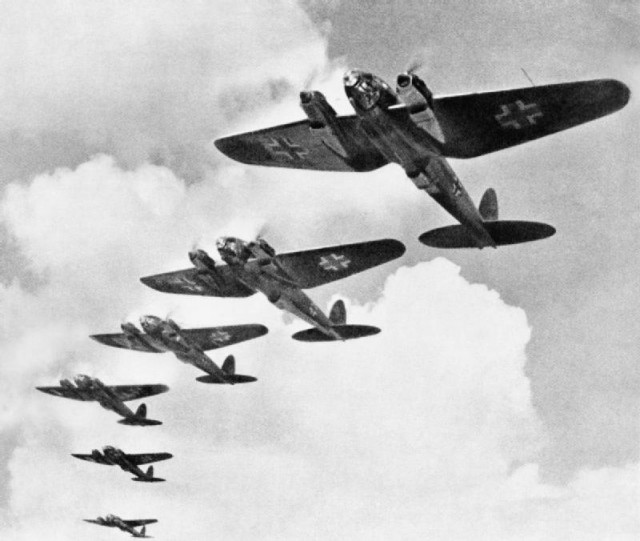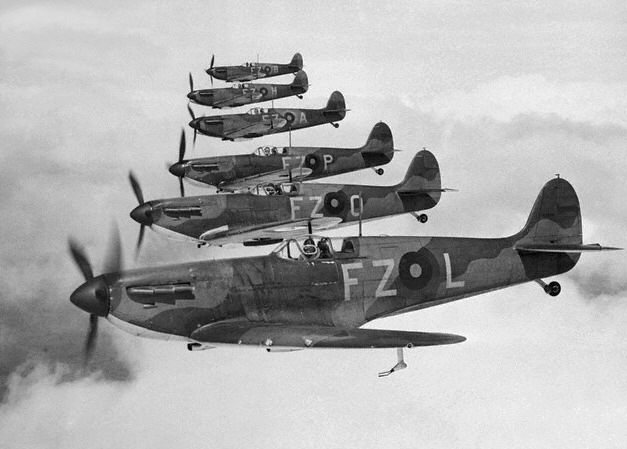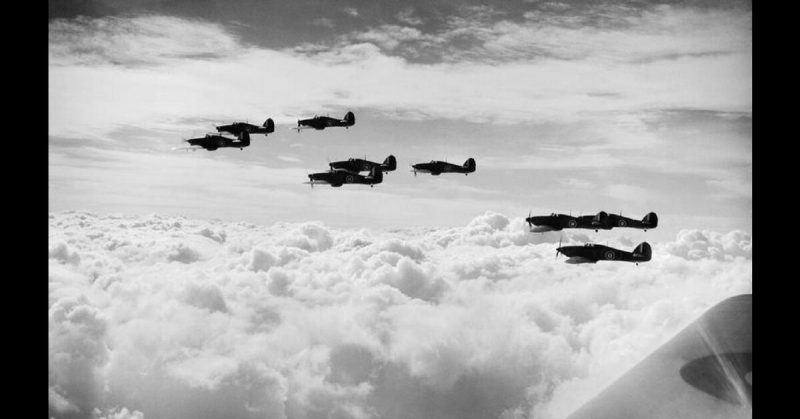History likes to paint Britain as the tiny country that, against all odds, somehow resisted the superior military might of Nazi Germany during WWII. But it was never that simple. Historical images show bombed out British cities that remained defiant till the last. But the reality was far more complex.
It was so complex, that no one agrees as to when it actually began and ended. German historians say it started on 8 August 1940 and ended in 1945, while the British insist it started on 10 July 1940 and ended on October 31 of the same year.
There were roughly four phases to the Battle of Britain:
Phase 1: Channel Battles

The Channel Battles took place on the English Channel from July 9 to August 11, 1940. Since Britain is an island nation, Germany hoped to choke them off by targeting their supply ships plying the channel. The Luftwaffe (German air force) had superior weaponry and could reach higher altitudes, but they also wanted to test out Britain’s defenses.
The Royal Air Force (RAF) lost 19 fighter planes, 18 coal ships, and 4 destroyers, while the Luftwaffe lost 31 fighter planes. With far higher casualties, the British were forced to rely on overland trains for supplies instead. Assured of their aerial superiority, the Germans pushed through with the second phase of their attack.
Phase 2: Eagle Attack

The Eagle Attack from August 12 to 23, targeted Britain’s coastal relay towers. The Germans thought they were a primitive form of radar, but didn’t realize that the towers were merely the sensors of a greater network known as the Dowding System. They therefore failed to hit the supporting facilities (like the phone lines and power stations) which made those towers work.
Unable to knock out the British radar system, the Luftwaffe launched an all-out assault on August 15, also known as “The Greatest Day.” Lacking a spy network on British soil, they believed that most of the RAF were concentrated in the south, closer to London. They were wrong, losing 16 bombers and 7 fighters to the RAF. August 18 was “The Hardest Day,” when both sides lost heavy casualties and the Luftwaffe retreated.
Phase 3: The Attack on Airfields
The Attack on Airfields from August 23 to September 16 saw the first bombs fall on British cities. Since the aim was to take out airstrips and military factories, the Luftwaffe cast a wider net. A tire factory in Birmingham was the first casualty on August 23, followed by massive bombing of the naval port at Portsmouth, with central London finally receiving a hit the following night.

Britain retaliated by bombing Berlin from August 25 to 26. Furious, Hitler ordered an all-out attack on British cities, setting the Blitz in motion. In doing so, he made his first tactical error, one that would eventually lead to Germany’s defeat.
Phase 4: The Blitz
The Blitz took place from 7 September 1940 to 21 May 1941. The name comes from the German blitzkrieg (lightning war), when bombs rained down on the cities of Birmingham, Bristol, Glasgow, Hull, Liverpool, London, Manchester, Plymouth, Portsmouth, and Southampton. It’s estimated that over 40,000 British civilians lost their lives, 139,000 were seriously injured, and some two million houses (mostly in London) were destroyed.
This was the turning point, for it destroyed the myth that German aerial superiority could conquer nations. America, which had stayed neutral thinking that Britain would lose, reconsidered its position. It would take the Japanese bombing of Pearl Harbor to finally get them involved directly, but continued British resistance convinced President Roosevelt to support Britain.
So How Did Britain Resist?
While American support eventually helped to turn the tide, Britain had the upper hand from the start. Though a small island kingdom, it was the epicenter of a vast global empire with immense resources and people at its disposal. It also had the largest naval fleet in the world (at the time), one that even Germany couldn’t stand against, despite the deadliness of the latter’s U-boats.
The German attacks on Britain had a three-fold aim: (1) to take out the RAF and its ability to protect Britain, (2) to control the English Channel and the Straight of Dover – the closest point between Britain and Europe, and (3) to bog down the British Royal Navy at the North Sea and at the Mediterranean so it couldn’t defend the British Isles.
To do so, however, it needed resources. Though Germany controlled most of Western Europe, as well as parts of the Middle East and Africa, it wasn’t enough. Russia had vast resources, but it resisted the German advance. And while Germany had an edge on technology, it meant nothing compared to Britain’s massive industrial output.
Though the Blitz may have been emotionally satisfying for Hitler, it wasted limited German resources and men. Due to fuel limitations, heavily loaded German bombers had to first cross the channel, and by the time they got to Britain, could only fly so far before needing to turn back. The alternative was to crash on British soil or into the channel, which happened frequently.

The Battle of Britain Day on 15 September 1940 saw the largest bombardment of British cities. In the aftermath, however, the Luftwaffe lost 60 planes, while the RAF lost 26. Still confident about their aerial superiority, the Germans neither increased plane production nor trained more fighter pilots.
Germany simply couldn’t produce enough planes and U-boats (or get enough fuel) to destroy the supply ships which kept Britain in business. In June 1940 alone, for example, Germany produced 237 single-seater fighter planes, its biggest output throughout the war. Britain made 496 in that same period, a ratio it maintained.
And while the RAF had a clearer and more focused strategy in bombing Germany, the Luftwaffe did not – yet another reason they failed to do serious damage to British war factories. Finally, more British pilots meant they could work in shifts, while German pilots were worked to death, something they called Kanalkrankheit (Channel sickness).
Then Hitler made the mistake of invading Russia, ensuring that the battle truly belonged to Britain.

